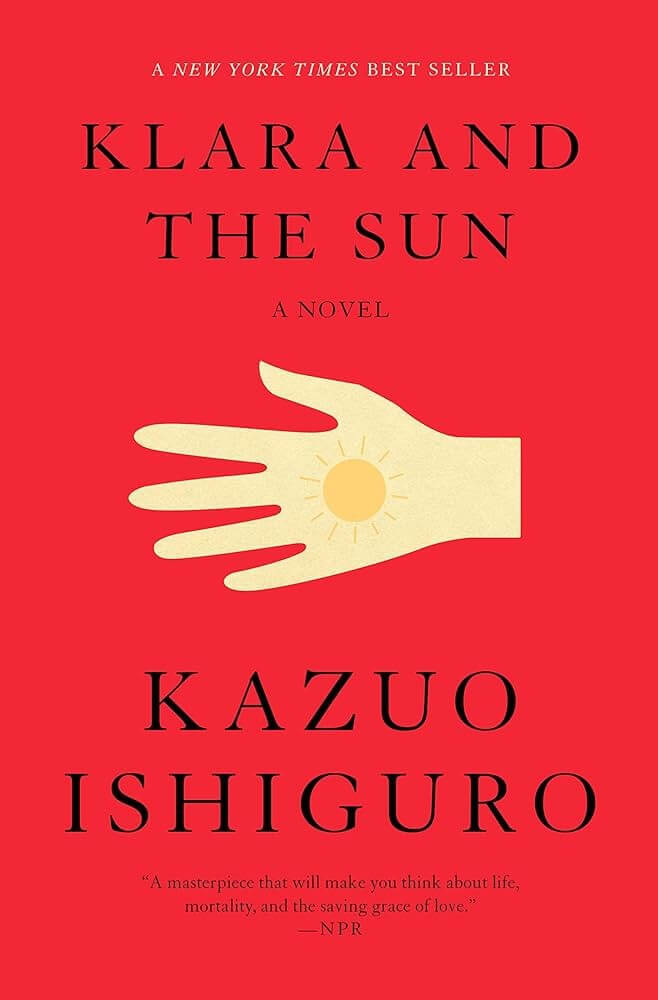
“Klara and the Sun” paints a poignant picture of a future where children, genetically engineered for brilliance, find solace and companionship in Klara, an observant and caring solar-powered android, in a world where technology intertwines deeply with the human experience.
Until recently, I didn’t think that humans could choose loneliness. That there were sometimes forces more powerful than the wish to avoid loneliness.
― Kazuo Ishiguro, Klara and the Sun
Embarking on a journey with “Klara and the Sun” by Kazuo Ishiguro, I was swept into a world where the boundaries between humanity and artificial intelligence are blurred.
Ishiguro, renowned for his elegant prose and deep exploration of complex themes, has once again captivated readers with a story that resonates with our deepest fears and hopes. Drawing parallels to our evolving relationship with technology, I’ll dissect the intricacies of AI’s emotional intelligence as presented in the novel, providing you with a thorough summary and a unique perspective on the blurred lines between artificial and human affection.

Klara, an Artificial Friend (an artificial intelligent friend), navigates a future where her kind is created to provide companionship for children. When I first encountered Klara, I was struck by her solar-powered existence, it was very interesting and her journey to understand and partake in the human world. She becomes a companion to Josie, a sick girl, and it’s through their bond that the story unfolds. Klara’s quest to seek healing for Josie from the Sun reveals her pure, almost childlike faith in the world around her.
Klara’s quest to understand and engage with the human world is a central theme of the novel. Her observations and interactions reveal so much about our society, our values, and our struggles. As Klara strives to find a cure for Josie, her journey takes us through a spectrum of emotions, from hope to despair, and back again. It’s a narrative that not only entertains but also makes you think and feel deeply about the world we live in and the future we’re heading towards.
Ishiguro’s narrative explores not just AI but also deep human emotions. I found myself drawn into a world where the lines between AI and human emotions and intelligence blur beautifully. As I turned each page (I am making it a such a big deal, isn’t it), the story unfolded a heartfelt exploration of loneliness and the universal human craving for meaningful connections.
Set against a backdrop of advanced technology, the characters’ quest for true emotional bonds struck a chord with me (Just like the movie Her, which you should give a watch!). Their longing for genuine connections, despite being surrounded by such technological advancements, highlighted a profound truth about our human nature. This novel is more than just a story; it’s a journey that made me pause and reflect on my own life, my moments of solitude, and my deep-seated desire for authentic relationships.
When I first picked up Kazuo Ishiguro’s ‘Klara and the Sun’, I was immediately struck by its profound exploration of themes that resonate deeply in our society. We’re talking about class, inequality, memory, and identity – themes that are more than just literary devices; they’re reflections of our real-world struggles. As I went deep into the novel, I couldn’t help but be captivated by how Ishiguro brings these issues to the forefront, challenging us to confront the widening gap between the privileged and the underprivileged. It’s fascinating how our memories and experiences shape who we are, and this book makes you ponder your place in a world where technology is increasingly influential.

Now, let’s talk about Ishiguro’s writing style. If you’re expecting something loud and flashy, think again. His approach is all about the subtle, yet profound impact. Reading this book, I felt like Ishiguro was quietly guiding me through a complex emotional dystopian landscape. The character of Klara, an Artificial Friend, offers such a unique lens to view the human world. Through her, Ishiguro brilliantly addresses the ethical dilemmas surrounding AI and its impact on humankind. His writing is understated but incredibly powerful, creating a narrative that’s both familiar and unsettling. As someone who appreciates nuanced storytelling, I found Ishiguro’s style to be a true game-changer.
Since its release, “Klara and the Sun” has received critical acclaim, with praises for its eerie and suspenseful tone. The novel has been lauded for exploring humanity’s anxieties about technology and the future. However, some critics have pointed out that it lacks the emotional depth and character development of Ishiguro’s previous works. Despite these criticisms, the novel is a testament to Ishiguro’s status as a master storyteller.
Klara and the Sun” received various significant receptions, being longlisted for the 2021 Booker Prize and the 2022 Andrew Carnegie Medal for Excellence in Fiction. It also featured on “The Washington Post”‘s “10 Best Books of 2021” list, “The 33 best books of 2021” by “The Times,” and former President Barack Obama’s summer 2021 reading list
As I reflect on “Klara and the Sun,” I am left with awe at Ishiguro’s ability to weave a narrative that is at once a commentary on AI and a profoundly human story. It’s a novel that entertains and makes us ponder our place in a world where the lines between human and machine are increasingly blurred.
As a fan of “Klara and the Sun,” I’ve discovered some books that resonated with me and I think they might intrigue you too. First, there’s “Gödel, Escher, Bach: An Eternal Golden Braid“ by Douglas R. Hofstadter. This book fascinated me with its exploration of mathematics, symmetry, and intelligence, weaving together the lives and works of Gödel, Escher, and Bach. It’s an enlightening read that offers profound insights into AI and human cognition.
Then there’s “Dune” by Frank Herbert, a masterpiece of science fiction set on the harsh planet Arrakis. It’s a compelling saga about young Paul Atreides, and it’s renowned for its deep exploration of power, religion, and the human psyche. There’s a movie as well of the same name, if movies are your hook, it sure is going to be a good watch!
Lastly, “Machines Like Me” by Ian McEwan really captured my attention. Set in an alternative 1982 London, it delves into the heart of a robot named Adam, challenging the boundaries between human and machine. This book’s exploration of complex human-AI relationships is thought-provoking and aligns closely with the themes in “Klara and the Sun.”